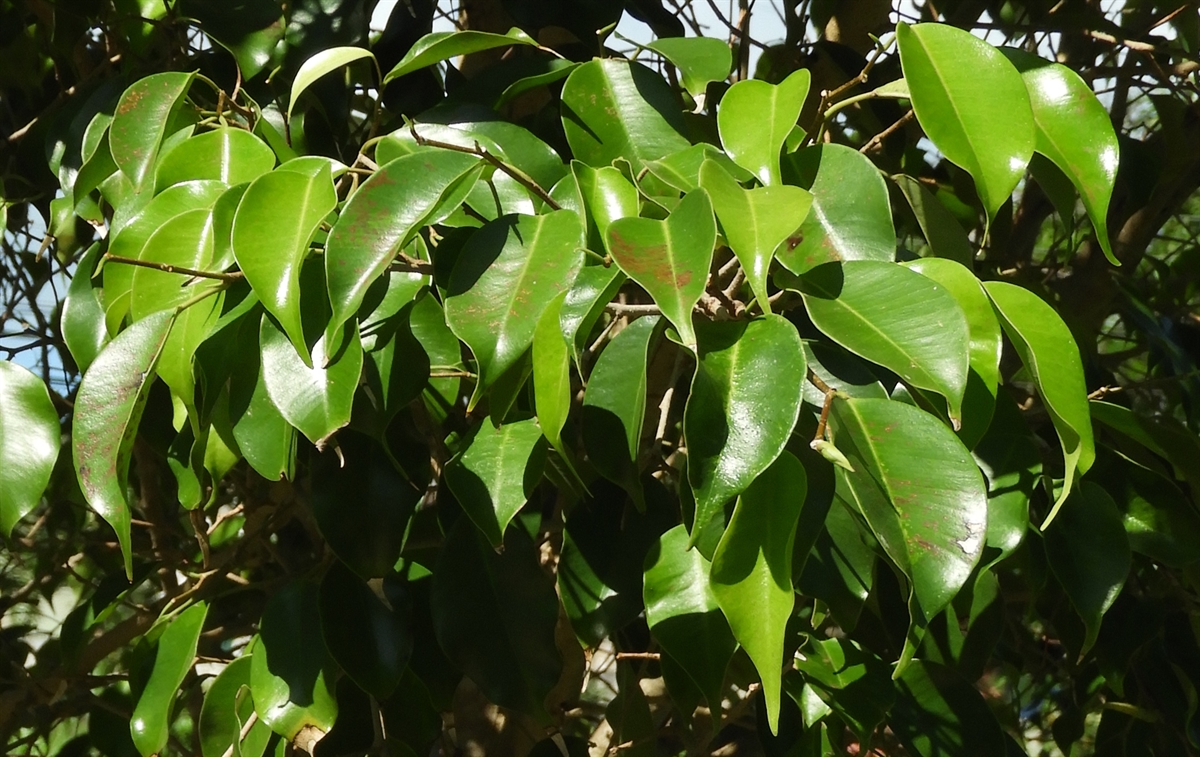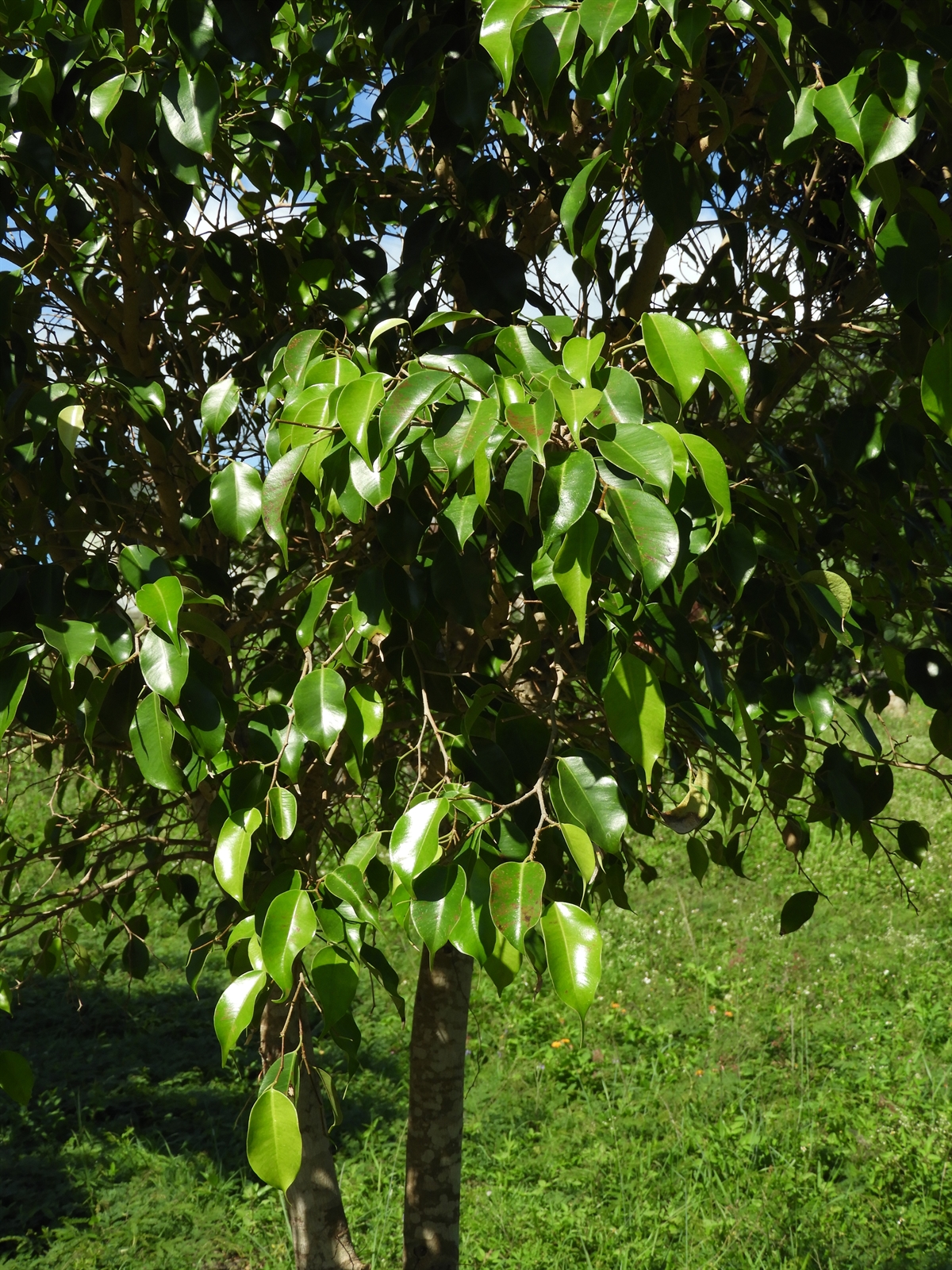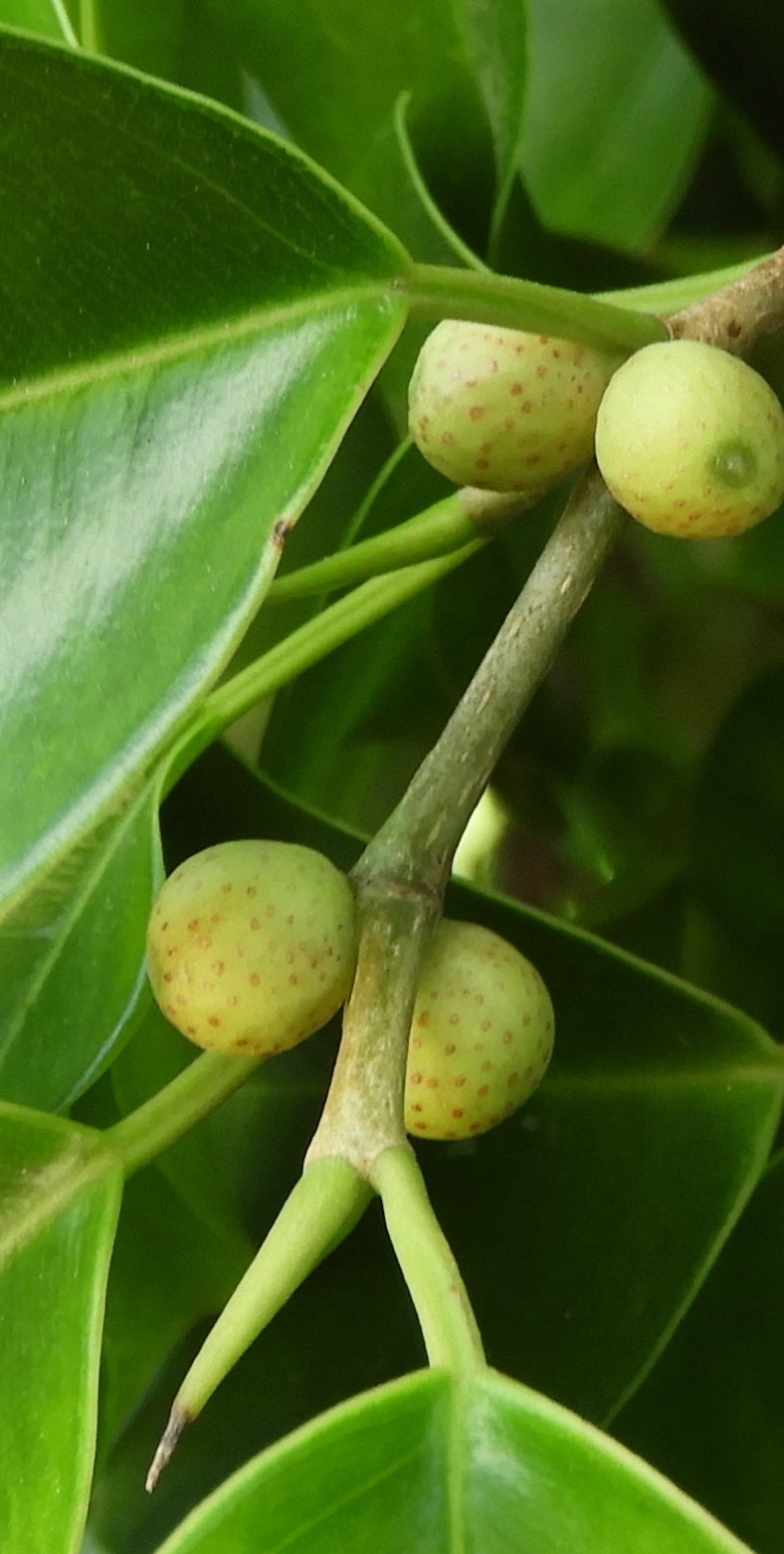Habit: Ficus benjamina grows as a large tree to 15 m in height with drooping branches and few if any aerial roots. The drooping leaves are arranged alternately (clustered at branch tips), to 10 cm in length, elliptic with an entire margin, an aristate (drip tip) leaf apex. Where the petiole attaches to the stem there is a prominent ring on the stem formed from the dehiscent apical sheath. The apical sheath has a slight hook at its tip known as a “cats claw”. Vegetative material produces a slightly milky latex when broken.
The highly reduced incomplete, imperfect, actinomorphic, flowers are borne entirely within a structure known as a Synconium (fig) and are fertilized by wasps. It is monoecious. Staminate flowers have a perianth of 2-6 parts and 2 anthers. The carpellate flowers have no perianth or stamens and a single carpel. The orange to red berry-like “fruits” are in pairs and sessile on the stem.
Habitat: Ficus benjamina grows in Human Altered environments (yards, gardens, inside homes as potted plants).
Distribution: Ficus benjamina is NOT native to the Lucayan Archipelago. It is native to India, Southeast Asia, South Pacific, and Australia.
Medicinal/Cultural/Economic usage: Ficus benjamina is not known to be used medicinally in the Lucayan Archipelago.
Ficus benjamina is used as an ornamental tree or shrub. In northern climates it is often a potted house plant.



